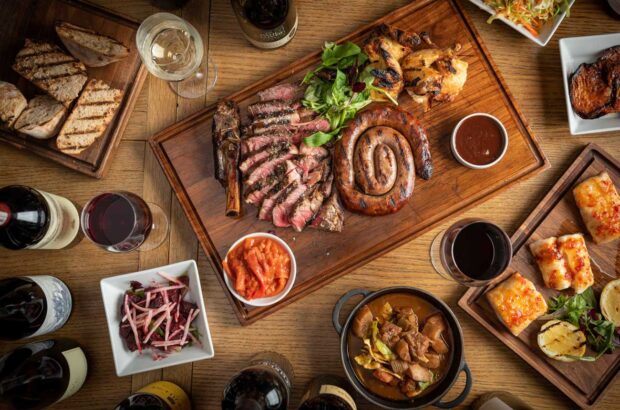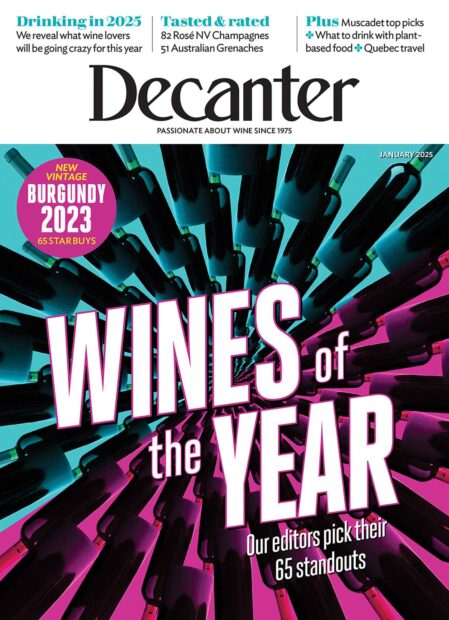Sweetness levels are sadly souring our taste for Alsace wine. Sue Style looks at how new rules could restore the region’s appeal
Alsace is on the dry side of the Rhine.’ Or so Pierre-Etienne Dopff of Dopff au Moulin was fond of saying in the 1990s. He wasn’t alone in this view. The wines’ traditional image – rich, aromatic, fruity but reliably dry – was established and nurtured by winemakers and Alsace’s wine promotion body, the CIVA, and understood and appreciated by consumers.
But things seem to have slipped, and the claim that many wines are getting too sweet for their own good is fast becoming a clamour. Jancis Robinson MW in The Financial Times, Eric Asimov in The New York Times and Tom Stevenson in his annual Wine Report have all complained that it’s getting harder to decode Alsace, and impossible to tell in advance how dry (or not) a wine will be. In last month’s panel tasting of Alsace grand cru Riesling 2007, the tasters’ main – almost only – bugbear was the difficulty of predicting the sweetness of the wines, even armed with details of the residual sugar level.
Is all this talk of an Alsace sugar rush just something the professionals are het up about, or is there a real problem? There certainly is, says Jean-Louis Vézien, director of the CIVA. ‘People are deserting us for other, simpler appellations. We’re failing to attract newcomers to our wine because of confusion about likely sweetness levels.’ Marcel Orford-Williams, The Wine Society’s Alsace specialist who buys from 14 different producers, agrees: ‘Our customers insist that they want dry wines, not heavy, overly sweet ones that don’t work with food.’
Etienne Hugel, whose family firm (along with Trimbach and Beyer) has been a standard-bearer for dry wines in Alsace, is similarly emphatic: ‘Our image as a dry-wine region is at risk.’ This concern is confirmed by the aptly named Philippe Dry, head of the Cave de Ribeauvillé cooperative. ‘Alsace is constantly battling the accusation that its entry-level wines are simply too sweet. Even in Germany we hear that!’
Residual risk
So where does the problem lie? Not with Vendanges Tardives or Sélection de Grains Nobles wines, which are by definition sweet-natured. Nor with the old, established houses (Hugel, Trimbach, Beyer) who have made their name with dry wines. Neither is there an issue with those winegrowers (Zind Humbrecht, Domaine Weinbach, Schlumberger, Rolly Gassmann) who have carved out a niche with consistent, well understood and admired wine styles that are often characterised by some residual sugar.
The problem lies mainly with entry-level AC wines, but also with some grand crus and lieux-dits (named vineyard sites), any of which can be startlingly sweet. Such wines are failing to connect with their most obvious market – the undecided buyer who’s looking for fresh, characterful, varietal wines that are pleasurable but not simplistic (to quote consultant winemaker Denis Dubourdieu, who advises the Cave de Ribeauvillé (see box, overleaf). Most consumers, when faced with the unpredictable sweetness levels of Alsace wine settle instead for the clarity of a generic Sauvignon or Chardonnay.
How has Alsace – for years known as a producer of aromatic, fruity, reliably dry white wines – ended up in the dock for producing too many sweet ones? A number of possible explanations are wheeled out, ranging from global warming (average summer temperatures in this already sun-privileged region have increased in the past 20 years) to reduced yields (down from an absurdly high 120 hectolitres per hectare to 80-96hl/ha for straight AC wines, and 55-66hl/ha for grands crus).
There’s even a suggestion that the region’s passionate dash to biodynamics could be a contributory factor. Any of these propositions are apt to raise eyebrows – after all, none of them are exclusive to Alsace, and most are common to other vineyards at similar latitudes, where raised sugar levels are not, seemingly, an issue.
Measure by measure
So what’s to be done? For a start, and most obviously, better information is needed about likely sweetness levels, says Jean-Louis Vézien. Over the years there have been countless proposals, including a designation to cover dry wines (with the implication that all others are sweeter); a sweet-only designation for wines above a prescribed residual sugar level (emphasising the trait most would like to see in retreat); a pictogram indicating sweetness on a scale from 1-10 (Zind-Humbrecht uses a scale of 1-5); and an upper limit on residual
sugar in Riesling.
The latest idea by the CIVA, proposed to its 7,000 members in January 2009, is to adopt European regulations on sugar levels. According to this system, AC and grand cru wines would fall into one of four categories: sec, demi-sec, moelleux or doux (dry, medium-dry, medium-sweet or sweet) with each category subject to defined sugar and acidity levels. It’s a system that’s warmly advocated by Dry, who has adopted it with success at the Cave de Ribeauvillé co-op.
The problem is that this four-tier categorisation would only be optional (to make it compulsory would require a decree by the French government; a complicated, lengthy business). The CIVA can thus only urge but not oblige its members to adopt it. Hugel, for one, is not holding his breath. ‘This is France,’ he grins. ‘We’re not famous for obeying the rules – especially when there’s no way of enforcing them.’
Debate will doubtless continue to rage and there seems little risk of an imminent solution. Meanwhile, there’s one sure way to get round the problem: bone up on tastings from the region, or enlist the help of a specialist Alsace wine merchant. Then work your way through the different grapes and the various house styles and decide for yourself which wines suit your palate, your pocket and your menu. It will be a voyage of rich, vinous discovery and at the end of it you will be entitled to speak with authority on which wines in Alsace are dry, which sweet, and which somewhere in between. But they’re not making it easy for us.
Written by Sue Style






